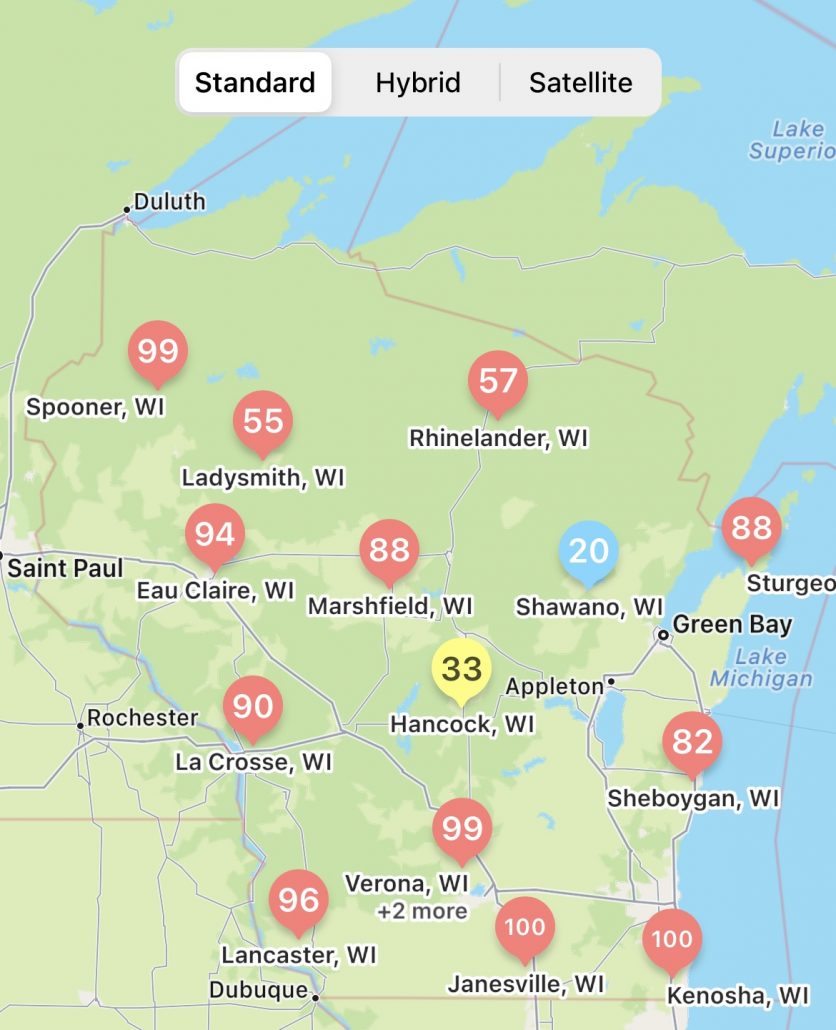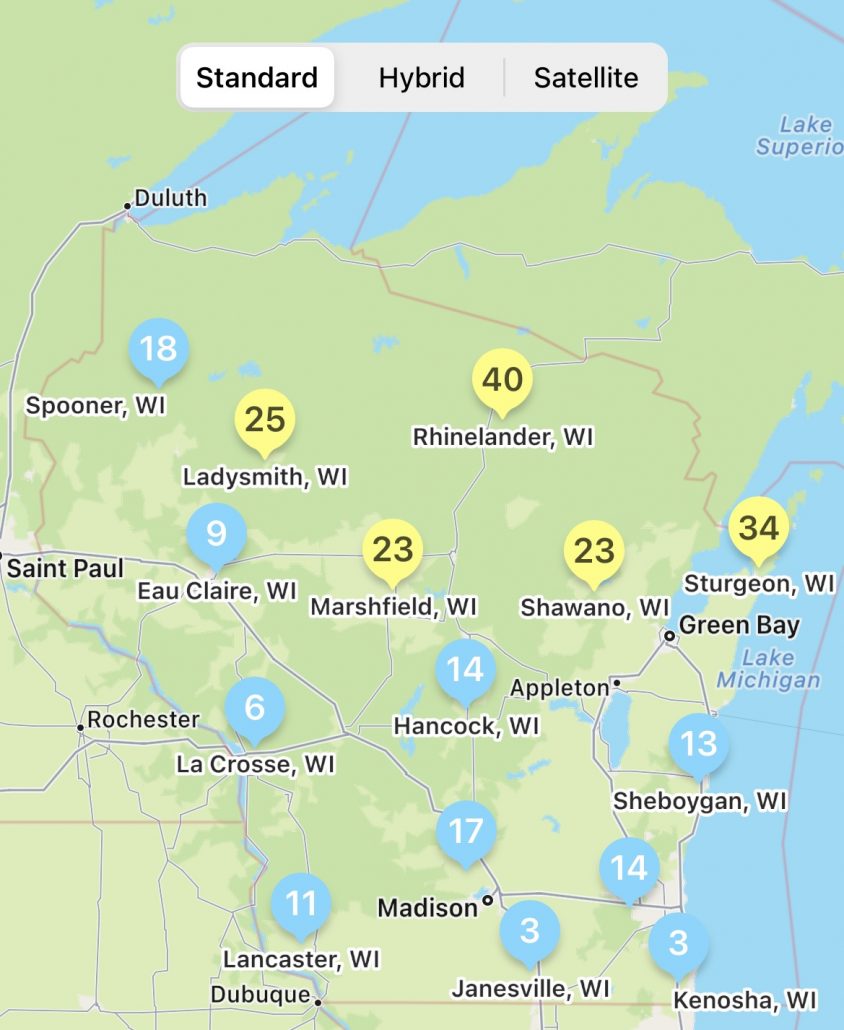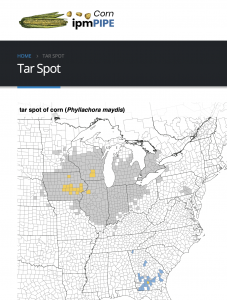Wisconsin Corn and Soybean Disease Update and Forecast – July 14, 2022
Damon Smith, Extension Field Crops Pathologist, Department of Plant Pathology, University of Wisconsin-Madison
Roger Schmidt, Nutrient and Pest Management Program, University of Wisconsin-Madison
Weather over the last week has been generally drier with milder temperatures in most of Wisconsin. Isolated storms have occurred and periods of leaf wetness have prevailed. So what does that mean for important plant diseases of corn and soybeans? Let’s break that down.
Tar Spot of Corn
As noted last week we found tar spot in Columbia county Wisconsin, which was the first report for 2022. This week we add Dane County to the list (Fig. 1). Tarspotter risk has remained high for much of the state over the last week due to milder temperatures and periods of leaf wetting events. It is important to note that conditions favorable for tar spot development are different than those for white mold in soybean. For white mold rain, more sustained wetting events, and cooler temperatures are required (see below). As of today (July 14, 2022) tar spot risk remains high or elevated for most of the state (Fig. 2). Over the next week the forecast is putting us a bit drier and hotter. Thus, the tar spot risk could continue to decline. However, remember that tar spot will continue to show up due to favorable weather 2 or more weeks back. The tar spot pathogen has a long incubation period (time from infection to tar spot appearance). Thus, you shouldn’t be surprised in finding tar spot at low levels over the next week. So should you spray fungicide now? If you can, wait until at least the VT (tasseling growth stage). The evidence is strong that the optimum window to spray fungicide to control tar spot is between the VT and R3 (milk) growth stages. Spraying before VT might leave corn plants vulnerable to a late-season tar spot increase. Thus, if you spray before VT, you might need to come back with a second application of fungicide closer to the R3 growth stage. For guidance on when/if to spray fungicide to manage tar spot, see my previous article.

Figure 2. Tar spot risk for Wisconsin on July 14, 2022.
White Mold of Soybean
White mold risk remains generally low and is dropping for most of the state of Wisconsin (Fig. 3). This is not surprising as temperatures have remained moderate with drier conditions. Based on the current risk and the 7-day forecast, fungicide applications can be held back. Folks should pay attention to the weather and Sporecaster risk as the crop moves into full bloom and early pod development. In recent years we have seen white mold risk increase during the late bloom time necessitating a fungicide application around the R3 growth stage. I would expect this same scenario to set up in 2022 in at least a portion of Wisconsin. Folks should monitor this situation carefully as we move ahead over the next 2 weeks. For more information on white mold and making the fungicide spray decision, see this previous article.

Figure 3. White mold risk for Wisconsin for July 14, 2022.
The Field Prophet Tool
For those who like all of their disease prediction tools in one place you might check out the Field Prophet version of the Tarspotter and Sporecaster apps. This tool consolidates all of our disease prediction tools into one convenient tool. The app also allows for true 7-day forecasting and will display 7-day trends to better inform your disease management decisions. Field Prophet, Inc is a startup company supported by UW-Madison and uses science-based information and the same models as Tarspotter and Sporecaster to deliver informative tools for agriculture clientele. You can also download and use Field Prophet for free for the next 6 months! You might find this tool as a handy alternative to Tarspotter and Sporecaster.






